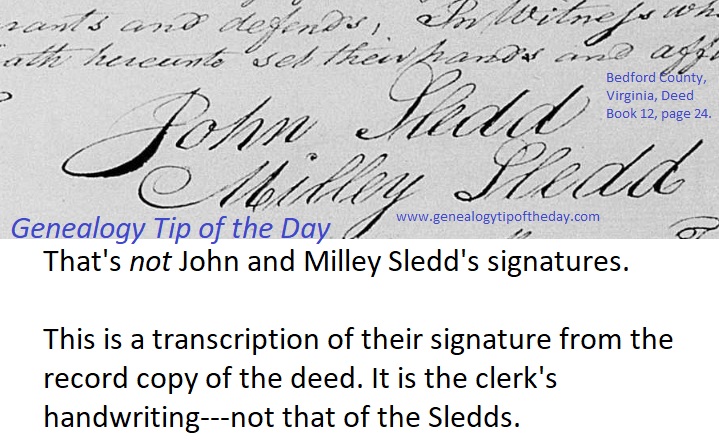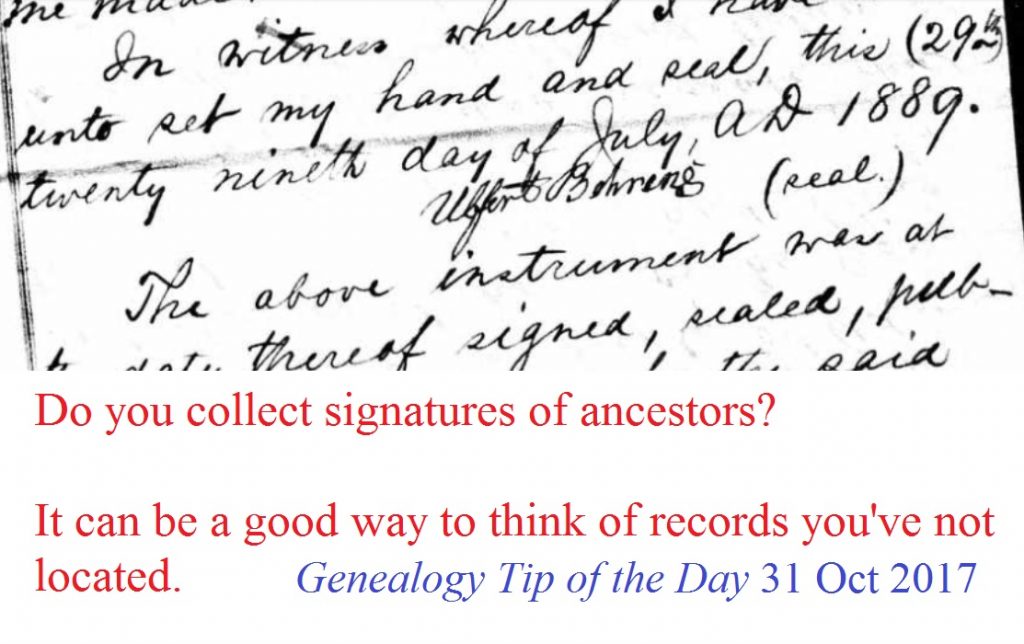
We often want something “personal” about our ancestor and, when pictures are not available, signatures can be a great substitute.
Just make certain that it really is your relative’s signature and not something written by the clerk or records official. In the US, record copies of deeds, wills, and other documents contain transcriptions of what was in the original document–including the signature. That’s the case with the “handwriting” of the Sledds’ in the illustration. It is from the record copy of the deed they signed. The record copy of a record is the official copy retained by the local records office.
If you have located an image of the actual deed, will, etc. then that rendering usually is the actual signature. The 1889 signature of Ulfert Behrens (as shown in the illustration) is from an image of his will made from the microfilm copy of his actual will which was retained in the packet of papers from his estate settlement. There is also a record copy of that will, which contains a handwritten transcription of it. That transcription only contains the clerk’s handwritten copy of his signature.

If you are uncertain if you have located the signature or just a handwritten copy of it, ask someone familiar with the specific records for their assessment of what you actually have an image of.
Help support Genealogy Tip of the Day by visiting any of the following sites:
- Try a GenealogyBank Genealogy Search to see what you find.
- Newspapers.com
- FamilyTreeDNA
- AncestryDNA offers
- Books on Michael’s Genealogy Shelf








No responses yet